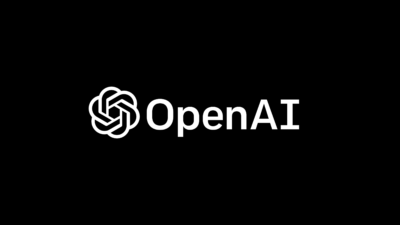In today’s digital age, speed is important. Users expect applications to be fast, responsive, and always available. To meet these demands, tech giants employ caching strategies that significantly enhance performance. This blog delves into the fundamentals of caching, explores various caching layers like Content Delivery Networks (CDNs) and in-memory caches such as Redis, and provides real-world examples from industry leaders like Cloudflare and Meta.
What is Caching?
Caching stores temporary copies of data in high-speed storage (RAM, edge servers) to avoid repeated slow fetches from databases or APIs.
Why It’s Non-Negotiable for Modern Apps
- Speed: RAM access is 100,000x faster than disk reads (0.1ms vs. 10ms).
- Cost Savings: Serving cached data can reduce cloud bills by 30-50%.
- Scalability: Handle traffic spikes without melting down your servers.
The Two Pillars of Caching: CDNs and In-Memory Stores
Most apps use two caching layers:
- CDNs for static content (images, videos).
- In-memory caches (Redis, Memcached) for dynamic data (user sessions, feeds).
Let’s dissect both, with real-world examples and math.
1. Content Delivery Networks (CDNs)
CDNs are geographically distributed networks of proxy servers that cache static content—such as images, stylesheets, and scripts—closer to end-users. This proximity reduces the distance data must travel, resulting in quicker load times.
How CDNs Work:
- Content Replication: When a user requests content, the CDN delivers it from the nearest server, reducing latency.
- Cache Duration: Cached content remains in the CDN as long as users continue requesting it. If a particular piece of content isn’t requested frequently, it may be evicted from the cache to make room for more popular content.
Example: Cloudflare, a leading CDN provider, accelerates websites by caching content at their edge servers worldwide. This approach ensures that users receive data from the closest server, minimizing latency.
When a user in Tokyo requests a website’s CSS file, Cloudflare serves it from a Tokyo edge server instead of the origin server in New York.
The Math of Latency Reduction:
- Origin Latency: 150ms (New York to Tokyo).
- Edge Latency: 20ms (Tokyo server).
- Cache Hit Rate: 95% (95% of requests are served from the edge).
Total Latency = (Edge Latency × Hit Rate) + (Origin Latency × Miss Rate)
= (20ms × 0.95) + (150ms × 0.05) = 19ms + 7.5ms = 26.5ms
Without a CDN, latency would be 150ms for all requests.
2. In-Memory Caches (e.g., Redis)
In-memory caches store data in the system’s main memory (RAM), allowing for rapid data retrieval. Redis is a popular open-source in-memory data structure store used as a database, cache, and message broker.
How In-Memory Caches Work:
- Data Storage: Frequently accessed data is stored in RAM, enabling microsecond response times.
- Expiration Policies: Data can have time-to-live (TTL) settings, ensuring that stale information is automatically removed.
Why RAM rather than Disk?
- RAM Access: 0.1 milliseconds (100 nanoseconds).
- Disk Access: 5-10 milliseconds (5,000-10,000x slower).
Example: Meta utilizes in-memory caching extensively to handle massive amounts of data efficiently. By caching user sessions and frequently accessed data, Meta ensures that its applications remain responsive even under heavy load.
Your Facebook feed is precomputed and stored in Redis. When you refresh, Meta serves the cached feed instantly.
- Cache Hit Rates:
Hit Rate = (Cache Hits) / (Total Requests)
If Redis serves 9,000 requests out of 10,000:
Hit Rate = 9,000 / 10,000 = 90%A high hit rate means fewer database trips, reducing load and costs.
- TTL (Time-to-Live) Optimization:
Meta uses a probabilistic TTL to balance freshness and performance:TTL = Base_TTL + (Random_Jitter × Base_TTL)
Example: Base_TTL = 5 minutes, Jitter = 10% → TTL ranges from 5 to 5.5 minutes. This prevents simultaneous cache expiration storms.
CDN vs. In-Memory Cache: A Head-to-Head Comparison
| Metric | CDN (Cloudflare) | In-Memory Cache (Redis) |
|---|---|---|
| Data Type | Static (images, JS, CSS) | Dynamic (user sessions, APIs) |
| Latency | ~20-50ms (edge network) | ~0.1ms (RAM access) |
| Cost Efficiency | Reduces bandwidth costs | Lowers database CPU usage |
| Scalability | Built for a global scale | Requires cluster management |
| Tool Examples | Cloudflare, Akamai | Redis, Memcached |
Best Practices for Implementing Caching
To effectively implement caching in your applications:
- Identify Cacheable Data: Determine which data is frequently accessed and can benefit from caching.
- Set Appropriate Expiration Policies: Use TTL settings to ensure that stale data doesn’t persist in the cache.
- Monitor Cache Performance: Regularly assess cache hit and miss rates to optimize performance.
- Handle Cache Invalidation: Develop strategies to update or invalidate cached data when the underlying data changes.
Conclusion
Caching isn’t just a tool—it’s an art. By leveraging caching layers like CDNs and in-memory caches, tech giants such as Cloudflare and Meta deliver fast and reliable services to millions of users worldwide. Understanding and implementing effective caching strategies can significantly improve your application’s responsiveness and efficiency.




[…] To reduce redundant computations, OpenAI leverages caching: […]
[…] caching (Redis, Memcached) – Every headshot, loot drop, and victory royale generates data. Games use […]
[…] Caching Layers (e.g., Redis, Memcached) to reduce database load […]